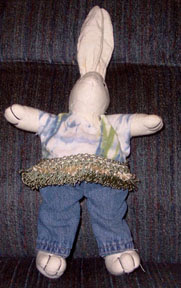
With so much attention focused on H1N1, or "Swine" flu, it's not surprising that a topic of conversation at the dog park would be Dog Flu. Someone had heard about a flu that was highly contagious and fatal, and concern was high.
According to the American Veterinary Medical Association, H3N8, or Canine Influenza was first seen in 2004, affecting racing greyhounds in Florida. During the summer of 2004, 14 racetracks in 6 states were affected. In 2005, 20 racetracks in 11 states showed outbreaks, and since then 30 states have reported the illness. Currently, Florida, Colorado, Pennsylvania and New York are said to have high levels of infections (as of September 2009).
The symptoms of H3N8 are respiratory; cough, sneezing, runny nose. The Canine Influenza FAQ, released by the University of Florida, says dogs do not have a built up immunity to this relatively new virus, and "Virtually all exposed dogs become infected; about 80% develop flu‐like illness, while another 20% do not become ill. " As with human influenza, it is not the primary disease that is fatal but the secondary infections that can set in while the immune system is compromised. The FAQ goes on to say "Fortunately, most dogs recover within 2 weeks without any further health complications. However, some dogs progress to pneumonia, which is usually due to secondary bacterial infections. While the overall mortality rate for canine influenza is low, the secondary pneumonia can be life‐threatening. There is no evidence for age or breed susceptibility for developing pneumonia during canine influenza.
How are dogs exposed to H3N8? Again, as with human influenza, the virus is spread by breathing particulates coughed or sneezed by an infected dog, direct contact with an infected dog, or with surfaces, food and water bowls, leashes, hand and clothing. However, the virus is inactivated by washing with soap and water. The virus is highly contagious, and infected dogs can shed the virus for 7 to 10 days while symptomatic, and infected dogs should be quarantined for 2 weeks. Dogs most at risk are those living in shelters or who spend time in other communal situations with high turn-over; grooming facilities, dog parks, doggie day care, etc. Dogs with minimal contact with other dogs have low risk of infection.
There is a vaccine for H3N8. The vaccine does not prevent infection, but limits the severity and secondary effects of the disease. Vaccinated dogs become less ill, and are less contagious. It is considered to be a "lifestyle" vaccine- appropriate for dogs whose lifestyle causes them to be more exposed to the virus. Dogs who get a Bordetella vaccine might benefit from the influenza vaccine, because the risk groups are the same.
Prevention at the dog park. While we can't keep dogs from mouthing each other (As one dog owner said to me "They don't have hands, this is how they grab each other!"), perhaps it is a good idea not to let dogs drink from a communal water source. Most important would be for owners to keep sick dogs home. I plan to get Juniper and Boodles vaccinated, just to be safe. There is always a lot of dog spit exchanged at the dog park.







No comments:
Post a Comment